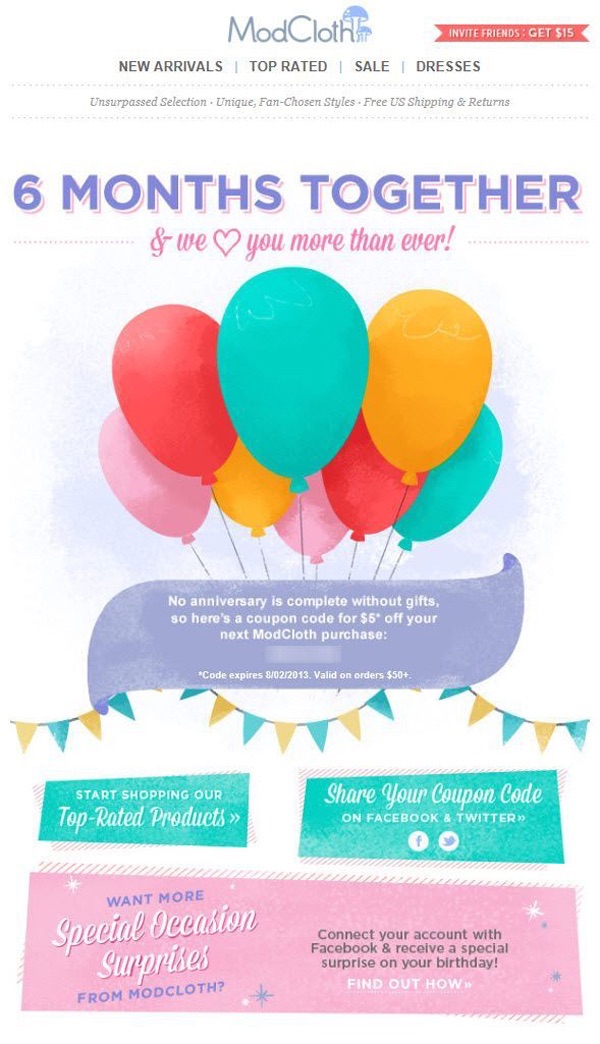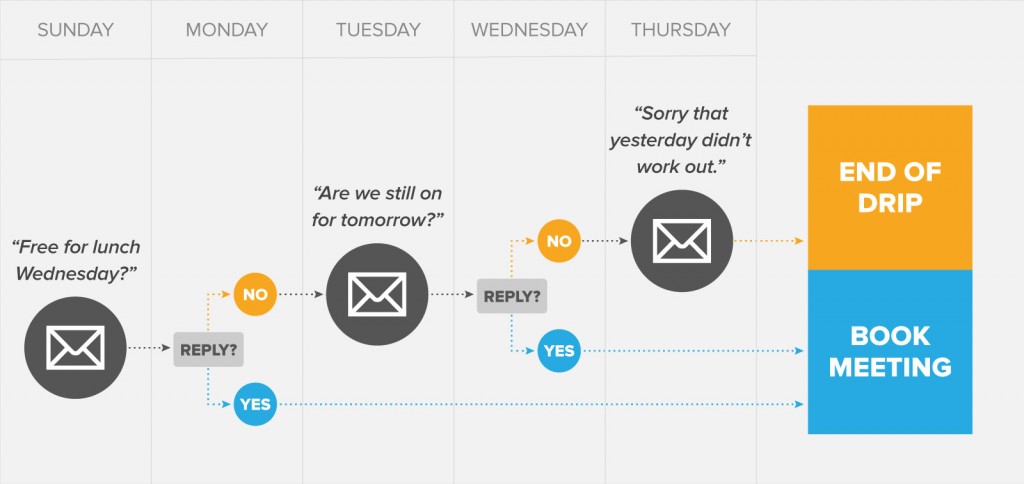Email marketing is one of those pivotal, game-changing facets of online marketing that nearly every serious marketer needs to not only know how to do — but do successfully. As you’ve learned to grow your business, you no doubt have come across email marketing jargon such as segments and drip feeds.
But what does it all mean, and how does it all come together to deliver the kind of results that matter to your bottom line? Better yet, how can you automate it so that every email practically sells itself? Let’s take a closer look:
What Is Automated Email Marketing?
Just as the name implies, automated email marketing is sending out emails to your customers and prospects automatically, based on a schedule, or triggers, you define.
It sounds simple, right? And for the most part, it is. But just like with any other online marketing skill, the more time you spend learning and testing and improving your email marketing campaigns, the more you learn. And the more you learn, the better you can apply those skills to further improve and grow your campaigns. If the idea of consistent, impactful marketing growth sets your heart aflutter – you’re going to love automated email marketing.
But before we delve into that, it’s worth noting what automated email marketing is not:
Despite the fact that they have a lot in common, automated email marketing does not refer to the emails your customers get when they place an order. These are mainly transactional emails that are sent out automatically, like “thank you for your order” and “your product has shipped”. And while these can be used to market your business further — as in, “now take 20% off on your next order”, their primary goal is to notify, not engage, subscribers.
Why Bother with Email At All?
Believe it or not, this is a common question I receive when helping people set up their automated email marketing campaigns. Compared to newer technologies like mobile text alerts, Facebook ads, retargeting and native advertising, email just seems…well, old.
But despite the fact that email has been around for over 40 years (feeling old yet?), it’s still one of the best lead generation channels available:
So with that in mind, how can you get started with a system like this that not only sends relevant, engaging emails to your customers but also does it automatically? First, it’s worth knowing what types of automated emails you can send. These emails generally fall into two camps:
- Event-based trigger emails and
- Drip-feed email content
They can be used independently or together depending on your end goals. For example, you could start with an event-based trigger email that then enrolls the customer in a drip feed – delivering content to them by email at set intervals you define.
Setting Up Trigger Emails
Trigger emails are just what they sound like — emails that are triggered based on your subscribers’ behavior (or lack of it). These are the most common types of automated emails, since they remove a lot of the tedious creation and sending of everyday messages. Trigger emails generally include:
- Welcome emails / onboarding / getting started with your product or service
- Abandoned cart emails
- Refer-a-friend (you bought something, now tell others for a coupon or other special)
- Milestone emails (birthdays, join dates, specific milestones)
You can also set up automated emails to be triggered based on actions that the customer takes. This is known as behavioral email marketing and can encompass all the points above and many more, including rewards emails, bonus emails (like free trial extensions) and much more.
Setting Up Drip-Feed Emails
Drip-feed emails — which deliver sequential messages based on a timeframe you specify, can also be a great source of extra revenue and leads if you do them right. Drip-feed emails are most commonly used to deliver things to subscribers that have signed up for a free report — to get them to take the next step in your funnel.
But that only scratches the surface of the potential that drip-feed emails have. Here’s an example from InsightSquared which was sent to a somewhat cold lead prospect list, inviting them to book a meeting with the company:
InsightSquared Account executive Dylan Rushe clarifies the drip-feed email set-up above:
“We were working through this huge list from a sales-specific event. It wasn’t a great list; everyone on it was pretty cold,” says Rushe. “So I created a 3-email drip […]. The initial email asked if the person was free for lunch Wednesday, with a GIF of the InsightSquared dashboard. This email was sent on a Sunday. The second email was automated to send on Tuesday to anyone who did not reply; it asked “are we still on for tomorrow?” If they didn’t respond, they received a third email on Thursday, saying “sorry that yesterday didn’t work out, happy to reschedule.”
This unusual type of approach – especially the “Are we still on for tomorrow?” creates a heightened interest (or even panic!) – especially if the recipient doesn’t have anything marked on their calendar. And then, they click — so you’d better have something click-worthy waiting for them.
Taking the Next Steps with Automated Email Marketing
It’s not enough just to know the types of emails you can send, or even brainstorm ideas about possible campaigns. What matters is getting the basics down so that you can have a solid foundation to build upon. With that in mind, you can create your first automated email marketing campaign by following these tips:
Segment Your Subscribers
Oftentimes, marketers start their email marketing campaigns by blasting every subscriber on their list with the same message. But just because you can do this, doesn’t mean you should. Fortunately, every serious email marketing platform offers segmentation options that let you divide your subscribers based on specific criteria which make them more likely to act on your personalized emails, including:
- Location
- Industry
- Product or service purchased / not purchased
- How they learned about you (for example, if they signed up through a Facebook contest or from your website)
By segmenting your subscribers based on actions they took or other identifying elements, you’ll greatly increase the odds that they’ll click through and take the action you want them to take.
Personalize Your Messages
It should go without saying, but blasting a message out to anyone and everyone with no real personalization is a sure-fire way to end up in your subscriber’s circular file (or get tons of unsubscribe notifications).
Personalizing your messages, even with simple things such as their name, location or the product(s) they were looking at or have bought, can go a long way toward establishing rapport and fostering a relationship.
Connect Your Emails to Customized Landing Pages
Too often, many marketers concentrate on getting the perfect email ready, only to send readers to a lackluster landing page. Make sure to tailor your landing page to your email campaign and create as much of a seamless transition between them as possible (so your email looks like it would match your landing page in terms of design, content, and call-to-action). This helps your readers feel much more comfortable about clicking, and helps create greater familiarity between your brand and products.
Split Test Your Emails
Many times, marketers reserve split testing for things like their landing pages or calls to action. But what about emails? Any platform you choose should give you the ability to A/B test your emails to determine which one generates the greatest number of clicks and conversions from your target audience.
Analyze Your Results
When split testing your email messages, you’ll want to take the time to properly analyze and look for certain KPIs (key performance indicators) that let you know if the email was successful, or what you can do better next time. These include:
- Email delivery rate – What percentage of the messages you sent actually arrived at your users’ inbox? A low delivery rate means that your server could be blacklisted and you’ll need to contact your web host or ISP to determine why.
- View rate – Of the emails that were successfully delivered, how many of them were viewed by recipients? Most email programs have a “preview pane” that allows their users to filter out and delete unwanted messages. Did yours pass the “view” test?
- Open rate – Of the users who received and previewed your email, how many actually opened it? This is one of the more important indicators, where your subject line typically does all the heavy lifting.
- Click-through rate – Of the users who received, previewed and opened your emails, how many of them clicked your call-to-action? A high click-through rate means that your users found your email enticing and interesting enough to click. This is where the email part of your marketing steps back and puts your landing page squarely in the spotlight.
- Conversion rate – Of the users who received, previewed, opened and clicked your email’s call-to-action, how many of them ultimately took the action you wanted? This can be a sale, but it doesn’t have to be. It could be signing up for a webinar, requesting a free estimate, or any other measurable action that you want your subscribers to take.
Choosing the Right Platform
Now that you have a better handle on not only how to get started with email marketing automation and what to look for, how do you choose a solid, reliable platform to help you do it all? There are a wide range of email automation services out there, each with their own pros and cons.
Kissmetrics Campaigns takes the behavior-based analytics that Kissmetrics is famous for, and lets you build gorgeous, automated emails with it, letting you segment, trigger, split test and analyze your marketing messages to see what’s working, and improve what isn’t. Check out the video below to learn more about Kissmetrics campaigns and start making your emails work harder for you:
About the Author: Sherice Jacob helps business owners improve website design and increase conversion rates through compelling copywriting, user-friendly design and smart analytics analysis. Learn more at iElectrify.com and download your free web copy tune-up and conversion checklist today!
source https://blog.kissmetrics.com/automated-email-marketing/



No comments:
Post a Comment